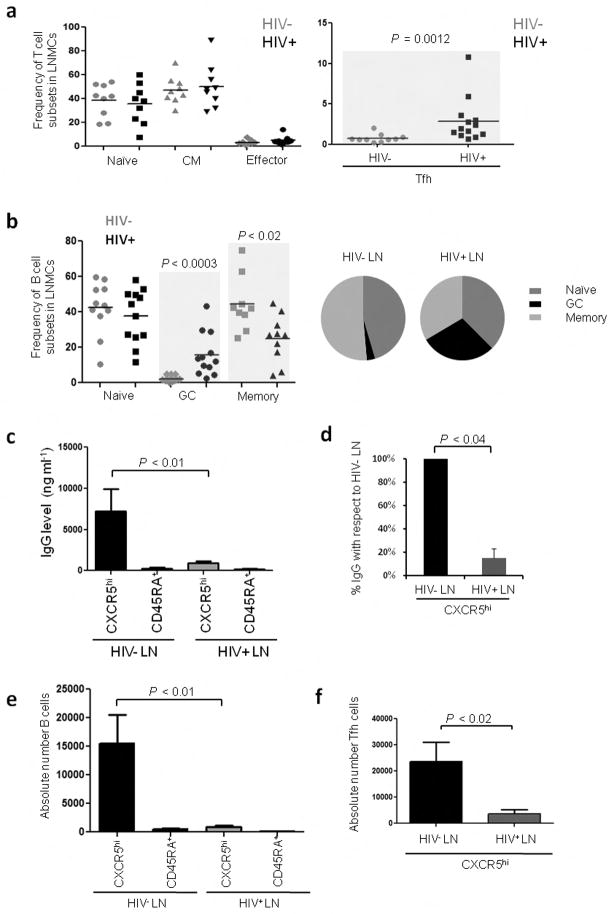Figure 1.
Tfh cells from HIV-infected subjects are unable to provide appropriate B cell help. (a) Frequency of T cell and B cell subsets in LNs from HIV− and HIV+ subjects. T cell subsets were defined as: naïve (CD3+CD4+CD45RA+CD27+), central memory (CD3+CD4+CD45RA−CD27+), effector cells (CD3+CD4+CD45RA−CD27−) and Tfh cells (CD3+CD4+CD45RA−CXCR5hi). (b) B cell subsets were defined as: naïve (CD3−CD19+CD38−IgD+), GC (CD3−CD19+CD38++IgD−) and total memory B cells (CD3−CD19+CD38+/−IgD−). For T cell subsets (HIV− n=9; HIV+ n=9) for Tfh cell subset (HIV−n=10; HIV+ n=13) for B cell subsets (HIV− n=11; HIV+ n=12). (c) IgG production (ng ml−1) in cocultures from LNMCs of HIV− and HIV+ subjects after 7 d (HIV− n=6; HIV+ n=6) as measured by ELISA. (d) Percent difference in the levels of secreted IgG from cocultures of Tfh cells and GC-enriched B cells from HIV+ LNMCs when compared to uninfected controls (HIV− n=6; HIV+ n=6). (e) Absolute number of B cells in coculture with Tfh and non-Tfh cells (HIV− n=6; HIV+ n=6) (f) Absolute number of Tfh cells after 7 d (HIV− n=6; HIV+ n=6) in coculture.

